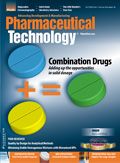Q&A with James Ingebrand, 3M Drug Delivery Systems Division
A Q&A with James Ingebrand, Vice President and General Manager of 3M Drug Delivery Systems Division, on recent industry trends.
PharmTech:
How has the increase in biopharmaceutical development influenced innovation in drug delivery? On an industry level, what are some key developments and targets for delivering biologic-based drugs?

James Ingebrand
Ingebrand:
It has to be acknowledged that the challenge of delivering biologic-based drugs has been an important driver of innovation in the drug delivery technology industry. Unfortunately, many of these technologies have failed to deliver on their initial promise. We have all seen the bold claims for the oral delivery of proteins and peptides. Inhaled insulin and the like burst on to the scene, and then faded into obscurity. This was not for lack of effort so, clearly, the technical and market challenges are great.
The fact that the industry, including 3M Drug Delivery Systems, continues to innovate in this arena speaks to the great need to offer a real alternative to injections and provide options for improved pharmacokinetic profiles and dose-sparing possibilities. At 3M Drug Delivery Systems, we believe our Microstructured Transdermal System (MTS) is a practical solution for addressing many of these issues. Our initial clinical success is turning concept into reality and generating considerable interest for a range of therapeutic areas, ranging from rheumatoid arthritis to vaccines.
PharmTech:
How do you think personalized medicine will influence drug-delivery technology and methods of delivery?
Ingebrand:
I think we will continue to see personalized medicine expand in scope. We see this manifested in a number of ways, including the launch of companion diagnostic tests as part of new drug introductions. Peering deeper into the crystal ball, I think the most interesting future developments for the drug delivery industry will be around "smart dosing" and therapeutic feedback loops. I can imagine a time when one's Smartphone, loaded with the latest apps, will monitor key physiological parameters and then either recommend or actually control the delivery of a therapeutic agent. 3M Drug Delivery Systems' hollow microneedle arrays (hMTS), for example, can provide a platform that could well enable that sort of next-generation technology.

Pharmaceutical Tariffs Are Imminent: How Industry is Bracing for Impact
April 16th 2025On April 14, 2025, the Trump Administration launched a national security-driven investigation into pharmaceuticals, a move that will likely result in tariffs being placed on pharmaceutical drugs, ingredients, and other components that are imported from outside of the United States.
Drug Solutions Podcast: A Closer Look at mRNA in Oncology and Vaccines
April 30th 2024In this episode fo the Drug Solutions Podcast, etherna’s vice-president of Technology and Innovation, Stefaan De Koker, discusses the merits and challenges of using mRNA as the foundation for therapeutics in oncology as well as for vaccines.